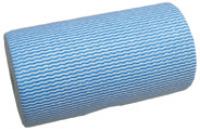One of the most important features of your restaurant or café will be your cutlery set – after all, these are used by your customers on a daily basis and are highly beneficial in creating a good impression. Anyone can immediately spot an establishment that uses low quality cutlery so, when it comes time to choose yours, you need to make sure that you consider each of your options carefully.
- Make sure that you have a set budget in mind before you go shopping for your newest cutlery set, as having a good idea of what you can spend will make the narrowing down process much easier.
- Do some research into the different materials that cutlery sets are commonly made from – for example, stainless steel cutlery is rust resistant and highly strong, whereas titanium is much more lightweight.
- Examine the types of edges offered on the knives of the cutlery sets you’re interested in – the best quality sets will include a variety of knives with different edges (straight, serrated, granton, and so on), which make eating all foods (from steak to vegetables) much easier.
- Look at the design of the cutlery – will it be easy to buy replacement pieces to match them? Keep in mind that restaurants and cafes are prone to cutlery theft and that pieces will get damaged over time and need to be thrown out.
As mentioned above, it can be very easy to spot a low quality cutlery set, especially when comparing it to one of exceptional quality. By taking into account the above points, you can ensure that you purchase a set that best suits your establishment, leaving your customers thoroughly impressed and eager to return.
http://www.cedarhospitality.com/products/cutlery.php
http://www.cedarhospitality.com/products/cutlery.php















